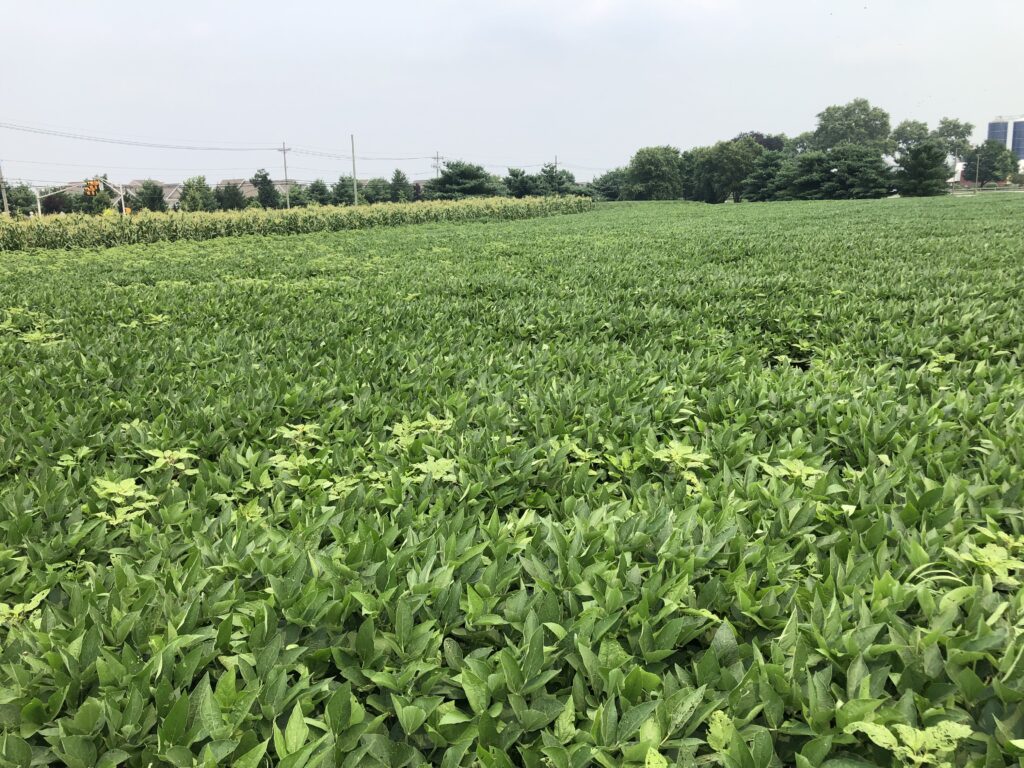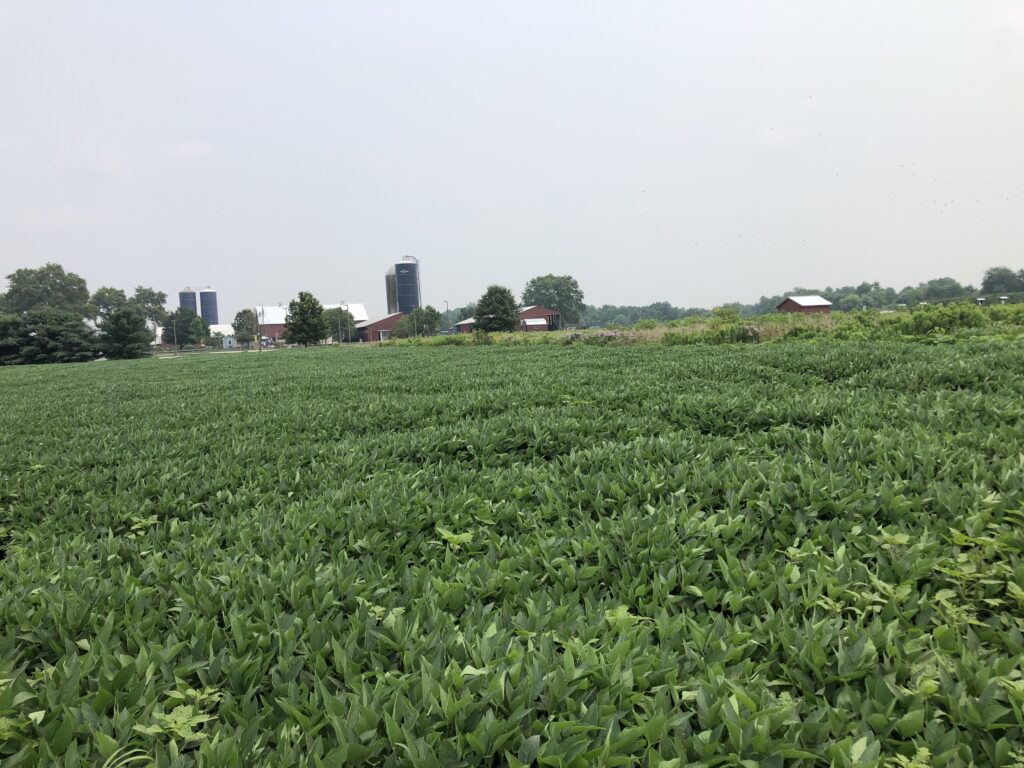Main Content
A side-by-side comparison of soybean planting practices was featured this year in our demonstration plots at the Burlington County Agricultural Center in Moorestown.
Field History: A 2020 crop of popcorn preceded the soybeans we planted earlier this year. Following popcorn harvest in fall 2020, cereal rye was planted at a rate of 1-1.5 bushels per acre on one-half of the area. The other half of the area was left fallow with only popcorn surface residues.
Field Preparation and Planting: On May 4, 2021, burndown herbicide was applied to both the area with rye and the area with only popcorn residue. Soybeans were planted into the rye on May 7 and into the popcorn residue on ~May 10. In both areas, the soybeans were full-season beans in maturity group 3.5 and were planted using a no-till drill with 6-inch row spacing at a standard planting population of 180,000 plants per acre.
Observations: Within 2-3 weeks after planting there was substantial weed pressure where beans were planted into rye compared to where they were planted conventionally. Volunteer rye was also establishing, which raised concerns about the ultimate success of this practice. We suspected poor efficacy of the pre-plant burndown application was related to the rye biomass inhibiting spray coverage.
Approximately 30 days after planting, post emergence (POST) burndown herbicide was applied to both areas using increased spray volume and pressure to aid in herbicide spray coverage. When applied with these modifications, the POST-herbicide effectively killed the weeds that escaped the initial burndown in the area with rye.

Photo 1. Pigweed species breaching the soybean canopy throughout the area where beans were planted conventionally (see lighter green plants in foreground and on left side of photo). 
Photo 2. Relatively weed-free soybean canopy where beans were no-till drilled into standing cereal rye.
Now that the beans have dried down, it is clear to see that where the beans were drilled into the standing rye, pigweed pressure was effectively eliminated (Video 1).
There are a number of possible explanations for the observed difference in pigweed pressure, some of which include:
- Weed seed germination and growth inhibited by rye mulch
- Allelopathic effects of cereal rye mulch on small-seeded weeds such as pigweeds
- Shading effect of mulch prevents light from reaching the soil surface; light is required for seed germination
- This also reduces soil temperature which slows germination
- Rye mulch creates a physical barrier that stops weed development
- Shading by the rye mulch slows development of weed seedlings
- Microbial immobilization of soil nitrogen due to high C:N ratio of mature rye biomass could have reduced competitiveness of seedling pigweeds
No-till soybeans have become the standard practice, but there are some important considerations to keep in mind when utilizing your no-till drill or planter in fields with heavy crop residue. Optimum seeding requires appropriate row coulters to break up the residue, well-maintained double disk openers to create a slot for the seed, adequate down-pressure for proper seeding depth, and ensuring good seed-soil contact. The New Jersey Soybean Handbook also recommends increasing your seeding rate by 10% for no-till production. For more specific information on adapting your equipment for high residue systems, check out this factsheet from Virginia Cooperative Extension: “Planter/Drill Considerations for Conservation Tillage Systems”.